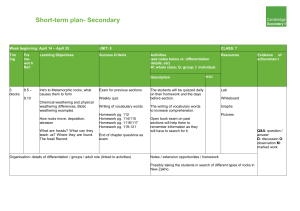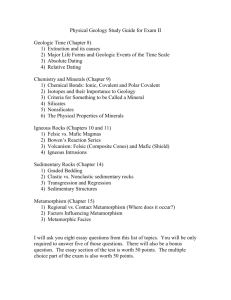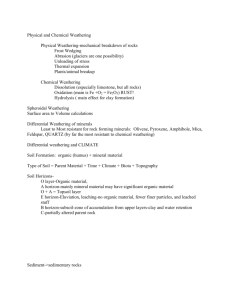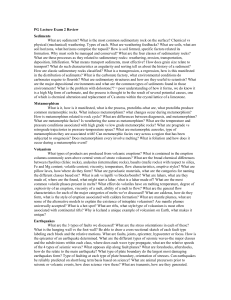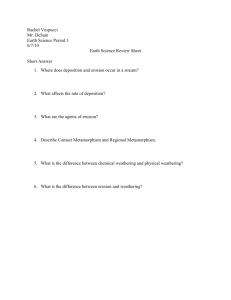Test Review Problems
advertisement
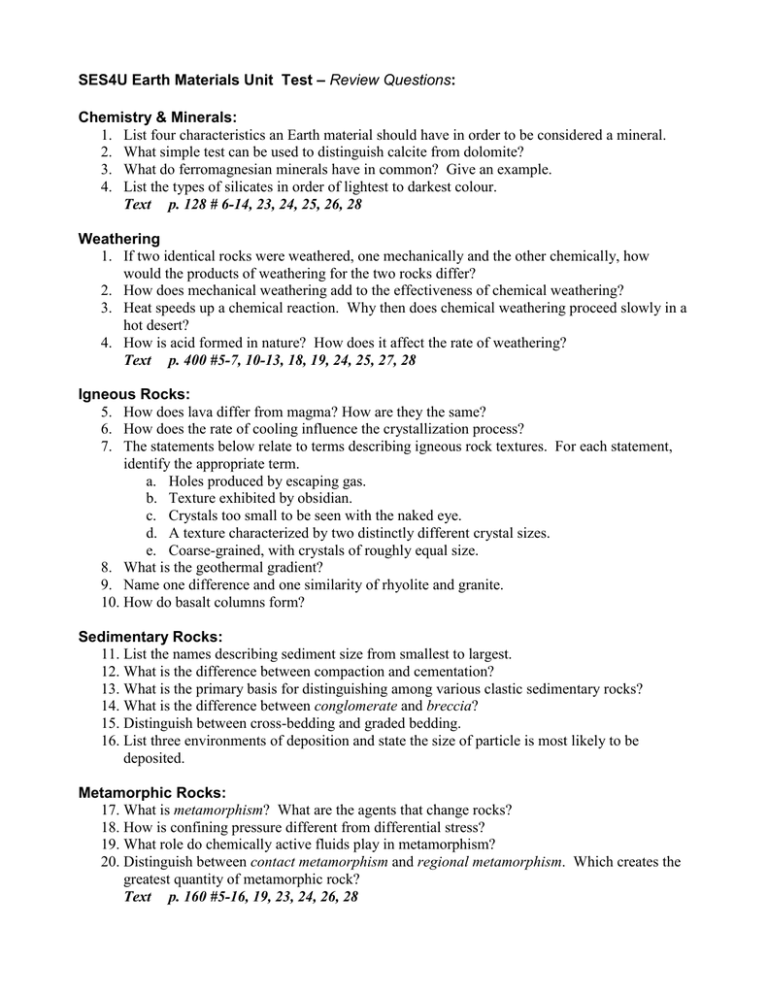
SES4U Earth Materials Unit Test – Review Questions: Chemistry & Minerals: 1. List four characteristics an Earth material should have in order to be considered a mineral. 2. What simple test can be used to distinguish calcite from dolomite? 3. What do ferromagnesian minerals have in common? Give an example. 4. List the types of silicates in order of lightest to darkest colour. Text p. 128 # 6-14, 23, 24, 25, 26, 28 Weathering 1. If two identical rocks were weathered, one mechanically and the other chemically, how would the products of weathering for the two rocks differ? 2. How does mechanical weathering add to the effectiveness of chemical weathering? 3. Heat speeds up a chemical reaction. Why then does chemical weathering proceed slowly in a hot desert? 4. How is acid formed in nature? How does it affect the rate of weathering? Text p. 400 #5-7, 10-13, 18, 19, 24, 25, 27, 28 Igneous Rocks: 5. How does lava differ from magma? How are they the same? 6. How does the rate of cooling influence the crystallization process? 7. The statements below relate to terms describing igneous rock textures. For each statement, identify the appropriate term. a. Holes produced by escaping gas. b. Texture exhibited by obsidian. c. Crystals too small to be seen with the naked eye. d. A texture characterized by two distinctly different crystal sizes. e. Coarse-grained, with crystals of roughly equal size. 8. What is the geothermal gradient? 9. Name one difference and one similarity of rhyolite and granite. 10. How do basalt columns form? Sedimentary Rocks: 11. List the names describing sediment size from smallest to largest. 12. What is the difference between compaction and cementation? 13. What is the primary basis for distinguishing among various clastic sedimentary rocks? 14. What is the difference between conglomerate and breccia? 15. Distinguish between cross-bedding and graded bedding. 16. List three environments of deposition and state the size of particle is most likely to be deposited. Metamorphic Rocks: 17. What is metamorphism? What are the agents that change rocks? 18. How is confining pressure different from differential stress? 19. What role do chemically active fluids play in metamorphism? 20. Distinguish between contact metamorphism and regional metamorphism. Which creates the greatest quantity of metamorphic rock? Text p. 160 #5-16, 19, 23, 24, 26, 28
